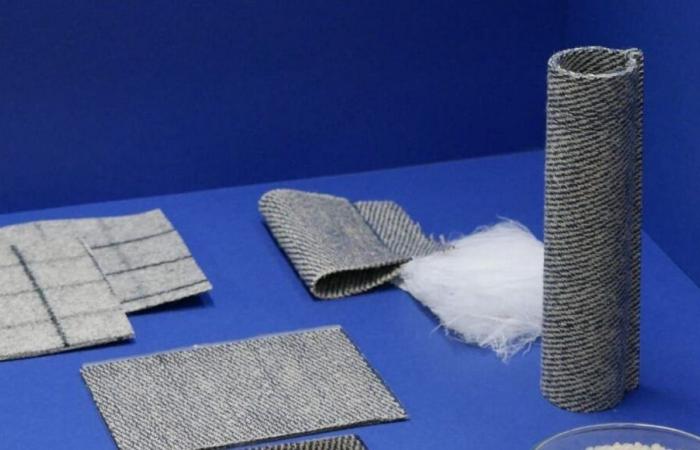Less oil and more whey in our sports shoes and clothing. This is what three sports brands are imagining. Salomon in Haute-Savoie partnered with two Isère brands 9aclimbingwhich makes climbing shoes and is sitting who makes soles. Together, they are funding research to imagine materials based on waste produced in the Alps, which will then be used in sports clothing.
A basketball prototype to revalorize wool or whey
Whey, wool and fruit skins. So it's hard to believe that we're making sports shoes out of them, yet that's what the engineers at the company imagined. cabinet The New Materialist installed in Annecy. Baptiste Arrivesone of the co-founders, explains: “the sole is made of material made from fruit skins, the upper, the entire covering of the shoe is made of felt” A felt that mixes wool and a bioplastic made from whey or whey. The sneaker in question is currently at the prototype stage, but we will have to motivate manufacturers to manufacture and use these materials on a large scale. “We made shoes here 50 years ago, that’s what we want to do today”concludes Baptiste Arribe.
The idea of this research is to promote local materials that are considered waste. There wool from Thônes and Marthod for example, from the name of this sheep typical of our two Savoies. We produce around 16 tonnes per year in our departments, but it is not exploited at all according to Sandrine Chandevault. She created **her association “Straighten your sheep” 3 years ago. She collects this wool from a few breeders to make decorative objects, among other things. “It’s a drop in the ocean, but we have the merit of doing it. Of course we would like to promote wool even more!” Its use will also allow farmers to earn a little better, or at least to reimburse the cost of these two mowings per year.
Margaux Longeroche
Making a pair of sneakers today is like streaming all the Harry Potter movies 31 times
It is the Outdoor Sport Valley association which pushes sports brands to think about their ways of producing so that they reduce their carbon footprint. Céline Brunel, president of OSV, is rather optimistic: “In the outdoor sports industry, brands are aware that their products need to have a much lower impact.” And there is a stake since according to ADEME, the Environment and Energy Management Agency, the production of a pair of sneakers generates on average 20 kilos of carbon emissions. . That's the equivalent of streaming all of the Harry Potter films 31 times.
But the time of industry is not that of the climate emergency. According to Céline Brunel, “a product in terms of research and development, between the moment we have the idea and the moment it comes out on the market, there is a good 2 to 3 years.” In any case, engineers have no shortage of avenues for research. They also imagined a competitor to polystyrene based on corn stalks.
France







